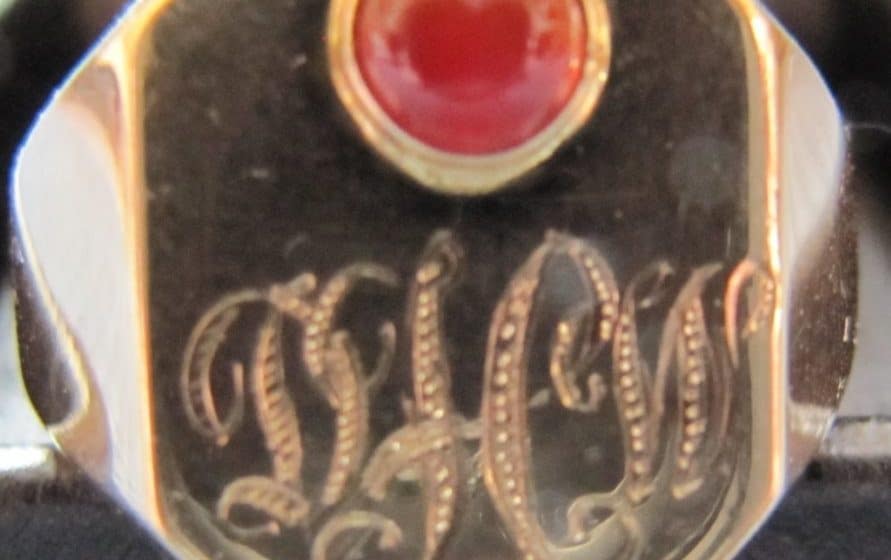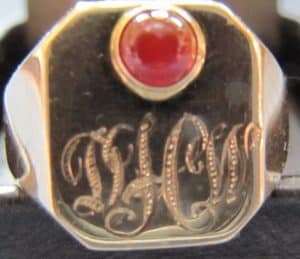
“What does love look like? It has the hands to help others. It has the feet to hasten to the poor and needy. It has eyes to see misery and want. It has ears to hear the sighs and sorrows of men. That is what love looks like.”- St. Augustine
“May the favor of the Lord our God rest upon us; establish the work of our hands for us- yes, establish the work of our hands.”- Psalm 90:7
An unremarkable ring lay unnoticed among the numerous items in my mother Elinor’s jewelry box. The ring had a red carnelian mounted on a thin, tarnished band. My wife Vicki often remarked that the ring looked like a prize from a box of Cracker Jack.
The carnelian had belonged to my maternal grandmother, Charlotte Dahlke. It was her engagement ring prior to her marriage in 1906. Although affordable diamond rings started to appear in mail-order catalogs such as Sears & Roebuck in the 1890s, diamonds continued to be viewed as the domain of the aristocracy.
Tradition favored simpler engagement bands- like Grandma Charlotte’s. Contrary to its appearance, the carnelian had great significance. Almost ninety years later, a Des Plaines (IL) jeweler transformed Charlotte’s engagement ring into its current setting.
What does love look like? According to pastor and author Matt Bays (Finding God in the Ruins), people who love truly are great at subtraction:
“I’ve often heard that a burden shared is divided by two. But there are moments, in the company of those who care, when it feels like a huge minus has replaced the division sign and our burdens aren’t divided at all; they’re being subtracted. And subtraction is always better than division because when things are subtracted, they disappear altogether.”
As our burdens disappear, space is created in our heart for the Holy Spirit. Henri Nouwen (The Wounded Healer) notes the Holy Spirit’s heart is greater, His eyes see more, and His hands heal more than our own heart, eyes, and hands. This enables us to transform, rather than transmit, our pain.
Max Lucado encourages us to share God’s grace with others. After all, he writes, if grace is compared to a wheat field, the Lord has bequeathed us the state of Kansas! Accepting God’s grace means you vow to give grace to others.
What does love look like? What does God see in you? Max has the answer:
“Marginalized and discarded? Others may think so. You may think so. But God sees in you a masterpiece.”


